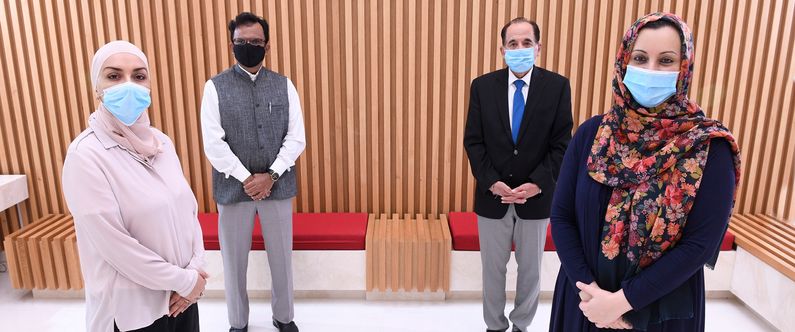WCM-Q research probes barriers to physical activity in MENA region
 Researchers at WCM-Q investigated the barriers to physical activity in the MENA region, which has some of the highest rates of obesity and type 2 diabetes in the world.
Researchers at WCM-Q investigated the barriers to physical activity in the MENA region, which has some of the highest rates of obesity and type 2 diabetes in the world.
Researchers at Weill Cornell Medicine-Qatar have examined the barriers to physical activity in the Middle East and North Africa that contribute to the region’s worsening obesity and type-2 diabetes crises.
It is estimated that just 25 percent of young people in the MENA region achieve the recommended 60 minutes per day of moderate-to-vigorous activity, and only 51 percent of adults reach the recommended 150 minutes per week of moderate intensity exercise. Countries in the MENA region have some of the highest rates of diabetes and obesity in the world.
The research team of the Institute for Population Health (IPH) at WCM-Q conducted a systematic overview of the existing scientific studies of physical activity in seventeen MENA countries, namely Bahrain, Egypt, Jordan, Iraq, Kuwait, Libya, Lebanon, Morocco, Oman, Pakistan, Palestine, Qatar, Saudi Arabia, Syria, Sudan, Tunisia, and the United Arab Emirates. Having reviewed a total of 119 studies, they found that the most commonly reported barriers to physical exercise in the region were lack of sporting facilities, lack of time, societal gender norms that limit opportunities for women to exercise, traditional cultural practices that encourage eating, harsh weather and hot climate, lack of social support and lack of motivation.
The study also points out that increased urbanization in the region and advances in technology have increased the amount of time many people spend sitting while at work. When combined with increased availability of unhealthy, calorie-dense foods, this reduction in physical activity can lead to weight gain and the associated negative effects on health. Insufficient physical activity is also believed to have detrimental effect on mental health and quality of life for children, youth, and adults.
Dr. Ravinder Mamtani, Vice Dean for Student Affairs-Admissions, Population Health, and Lifestyle Medicine, said: “It is clear from the literature that lack of physical activity is a major contributor to poor health right across the MENA region. It is therefore incumbent on governments to provide opportunities for physical activity for the public by building parks and sporting facilities. As we have seen in recent years, Qatar has made huge steps forward in this regard, with new parks opening all over the country, increased numbers of cycle paths, and plenty of new sports facilities. We believe the research shows that this kind of investment is required all over the MENA region.”
Specific socio-demographic factors, such as advanced age, less education, being female, and being married, were also found to be barriers to physical activity. The appeal of television, playing electronic games, and use of computers and mobile devices has also led to increased sedentary time for children. Meanwhile, a desire to gain health benefits, being male, wishing to lose or maintain weight, dietary habits, recreation, and increased Body Mass Index were identified as facilitators of physical activity. Considerable variation in the barriers to physical activity was observed across the different countries.
The research, titled Barriers and Facilitators Associated with Physical Activity in the Middle East and North Africa Region: A Systematic Overview, has been published in the International Journal of Environmental Research and Public Health, a leading scientific journal. The authors of the research were Dr. Mamtani, Dr. Sonia Chaabane, Projects Specialist, Dr. Karima Chaabna, Instructor in Population Health Sciences, Dr. Sathyanarayanan Doraiswamy, Assistant Director of the Institute for Population Health, and Dr. Sohaila Cheema, Assistant Dean for the Institute for Population Health.
Dr. Cheema said: “The social, cultural, environmental and economic differences across the region influence the particular nature of the barriers to physical activity in each country. As such, our research recommends customized, country-specific interventions that take account of the unique barriers to physical activity in each location. Broadly speaking, however, increased provision of sporting facilities and measures aimed at facilitating physical activity for females, working parents, the elderly and young people are likely to be key for most countries in the region.”